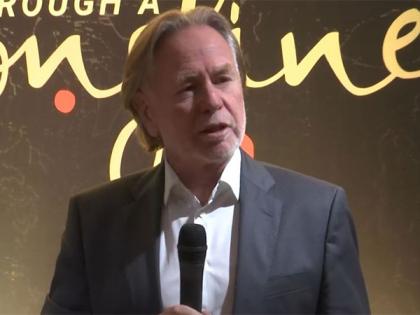Walking Through A Songline Exhibition happening at pinnacle of Australia's happy relationship with India: Australian envoy
By ANI | Published: May 25, 2024 03:34 AM2024-05-25T03:34:52+5:302024-05-25T03:35:06+5:30
New Delhi [India], May 25 : Australian High Commissioner to India, Philip Green OAM, attended the opening of 'The ...

Walking Through A Songline Exhibition happening at pinnacle of Australia's happy relationship with India: Australian envoy
New Delhi [India], May 25 : Australian High Commissioner to India, Philip Green OAM, attended the opening of 'The Walking Through A Songline Exhibition' on Friday and stated that the exhibition is happening at the pinnacle of Australia's "long and happy relationship" with India.
In his address at the exhibition, the Australian envoy said, "This exhibition is happening at the pinnacle of Australia's long and happy relationship with India. We have always been friends, but now we are strategically aligned."
"Now we have a strong economy and complementary activity that works together. And now we have nearly a million people of Indian origin in Australia, one of the largest communities and the fastest growing community in our nation, who are making enormous contributions to us," he added.
Philip Green OAM noted that they are presenting a very special part of Australia's First Nations culture. He said that the Songlines Project has been going on for many years now.
Speaking about the Songlines Project, he said, "Tonight, it's special because tonight we are bringing you a very special part of our First nations culture. The Songlines project has been going for many years now, and what you will see tonight is the end to development of this immersive experience is delivered. But, this derives from finding, refinding a songline from the central and western deserts in Australia that had been largely forgotten, was passed on orally from generation to generation."
"And what has occurred over the last ten years is the recreation of a tradition which was largely being lost. And so what you will experience this evening is the re-achievement of culture that we're in the process of losing. Many people have been mentioned for their work here this evening, and I'm delighted at all of their support," he added.
He stated that Australia is proud of the indigenous part of its society. He stressed the importance of paying tribute to the indigenous people of Australia.
Highlighting the importance of paying tribute to indigenous part of Australian society, he said, "There are many parts of Australian society that we are proud of, but there is none that we are more proud of than our indigenous part of our society, a civilization which has had an ongoing culture for more than 660 thousand years, the longest living culture on the planet that is unique in the world and something that the government that I represent is determined to pay greater attention to."
"As many of you will know, some of our history is dark and we need to remember that, we need to pay tribute to our indigenous people. We need to bring them forward as a key part of our diplomacy and our national life in every way. And in putting this exhibition on for you, this evening...It's an important part of the way in which we seek to find reconciliation in our own nation."
Philip Green OAM expressed happiness to bring the exhibition to an Indian audience and noted that Australian indigenous people are a culture that goes back 60,000 years.
Speaking to ANI, Australian envoy said, "We're delighted to bring this exhibition to an Indian audience. For us, this is very special, Australia's indigenous people is a culture that goes back 60,000 years. It's the longest living alive culture on the planet. And what we have done here is to bring together some of the ancient stories, the mythologies, the dreamtime of Australian indigenous people, and turn them into a multimedia, immersive art form that people can experience, learn something of Australian indigenous culture, but also see something that is extremely modern."
"This is presented, in a way, with its multimedia capacity, which is entirely immersive and takes one right into the center of the songline to understand the art, but also the culture and the civilization that lies behind it," he added.
He also spoke about the similarities between the art and culture of Australian aboriginal people and the natives of the Indian subcontinent. He noted that there are a number of similarities between the First Nations art of Australia and India.
Asked whether there are similarities between the art and culture of Australian Aboriginal people and the natives of the Indian subcontinent, he responded, "Yes, I do, and that's probably not surprising. Scientists tell us that our continents were once merged in the so-called Gondwana land, and we see a number of parallels between the First nations art of Australia and that of India."
"And we've taken quite a lot of effort to bring together Australian and Indian First nations artists in the past, particularly from the Gond people. And there you see the similar sort of use of dots that you see in Australian indigenous art. So, there is some similarity there. And I think Indian audiences will enjoy this exhibition for trying to compare and contrast with their own experiences of First Nations art," he added.
Disclaimer: This post has been auto-published from an agency feed without any modifications to the text and has not been reviewed by an editor
Open in app




